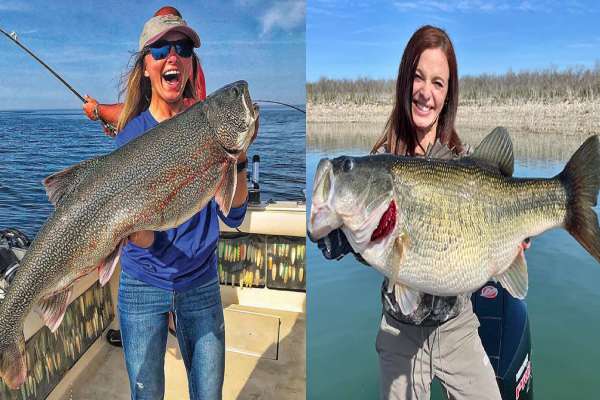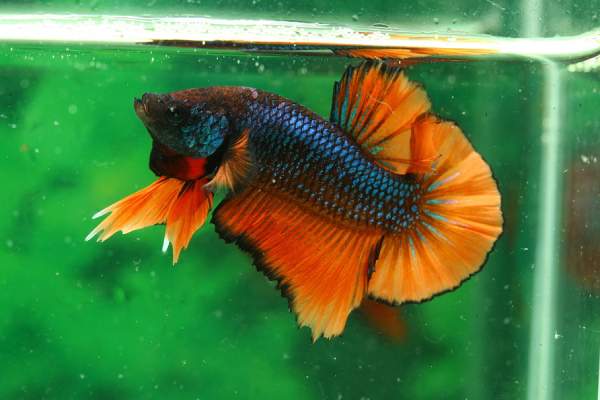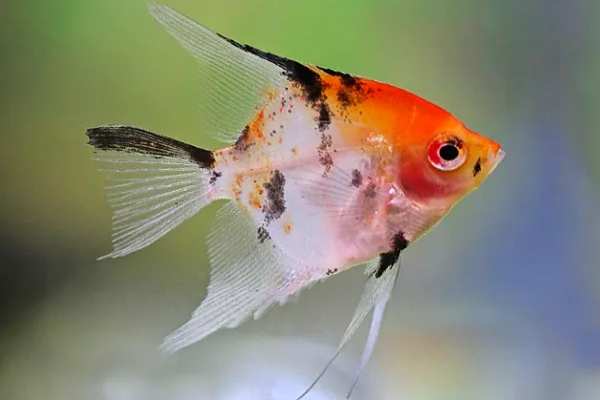Cold Water and Cichlids: Their Different Tolerances
Fish are wonderful organisms with an incredible ability to adapt to their environment.
Take cold water cichlids as an example. These freshwater fish can be found all across the world, from warm African seas to freezing streams in South America.
Despite their differences, cichlids have adapted to their environment and discovered ways to live. So, what is the secret to their adaptability?
Well, we will answer this question elaborately in this blog post. We will explore all there is to know about cold water and Cichlids. Now without wasting much time, let’s jump right in and get started.
What Kind of Fish are Cold Water Cichlids?
Cold water Cichlids are a type of freshwater fish distinguished by their brilliant colors and numerous species.
These fish are from the Cichlidae family and are found in many parts of the world, including Africa, South America, and Central America.
Cold water Cichlids exist in a variety of sizes, shapes, and colors, making them popular among aquarium hobbyists.

Cold-water Cichlids are recognized for their distinct behaviors and social structures. They engage in elaborate breeding and parental behaviors, frequently forming family groups to safeguard their offspring.
Furthermore, some cold water cichlids are noted for their ability to adapt to changing environments, which has resulted in their vast distribution throughout a variety of aquatic habitats.
Cichlids Tolerance to Cold Water
Cichlids are a type of fish recognized for their ability to adapt to changing water conditions, including temperature fluctuations.
These fascinating aquatic fish have a certain tolerance for colder water temperatures.
Unlike certain fish species, which may suffer in colder conditions, cichlids can adapt and tolerate a wide range of temperatures.
Cichlids tolerance to cold water is attributed to their natural habitat diversity as they may be found in a variety of temperature zones. This enables them to thrive in areas where the water temperature occasionally drops.
However, it is important to remember that, while cichlids can tolerate colder water conditions to some extent, severe freezing temperatures can still be harmful to their health.
So, if you are keeping cichlids, ensure that the water temperature is appropriate and stable within the prescribed range for the cichlid species you are keeping.
Read Also: Balloon Belly Ram – Care, Behavior, Diet and Tank Mates
Cold Water Cichlids Natural Habitat
Cold water Cichlids live in a range of natural environments, including lakes, rivers, streams, and ponds.
A cichlid’s specific habitat is determined by its species, as different types of cichlids have evolved to adapt to varying settings.
African cichlids, for example, are prevalent in East Africa’s rift lakes, including Lake Malawi, Lake Tanganyika, and Lake Victoria.
These lakes are noted for their distinctive water properties, which include precise pH values and mineral content.
South American cichlids, on the other hand, live in the Amazon River and its tributaries, where the water is typically soft and slightly acidic.
Central American cichlids live in rivers, lakes, and ponds throughout Mexico and Honduras, adapting to a variety of environmental changes.
In their natural settings, cichlids exhibit complex territorial, mating, and eating behaviors. Some species are known to build elaborate nests or breeding grounds, while others construct dominance hierarchies within their groups.
What Temperature Can African Cichlids Tolerate?
African cichlids are noted for their ability to adapt to different water temperatures, but they also have preferences based on their natural habitats.
African cichlids prefer temperatures ranging from 72 to 82 degrees Fahrenheit (22 to 28 degrees Celsius).
Lake Malawi cichlids, for example, prefer warmer temperatures of 75 to 82 degrees Fahrenheit (24 to 28 degrees Celsius).
Lake Tanganyika cichlids, on the other hand, prefer slightly cooler waters, ranging from 72 to 78 degrees Fahrenheit (22 to 26 degrees Celsius).
As an aquarium hobbyist, you must reproduce these temperature ranges in your tanks to maintain the well-being and health of your African cichlids.
Maintaining the proper water temperature is critical for the health, behavior, and reproduction of your cichlids.
Regular monitoring and modification of the aquarium heater can help to provide a stable and comfortable habitat for these vivid and intriguing freshwater fish.
Below is a table showing different varieties of cichlids and their preferred temperature ranges:
| Cichlid Type | Ideal Temperature Range (Fahrenheit) | Ideal Temperature Range (Celsius) |
| Lake Malawi Cichlids | 75-82 | 24-28 |
| Lake Tanganyika Cichlids | 72-78 | 22-26 |
| South American Cichlids | 75-82 | 24-28 |
| Central American Cichlids | 75-80 | 24-27 |
| Apistogramma Cichlids | 72-78 | 22-26 |
Do Cichlids Need Warm Water?
Yes, most cichlids enjoy warm water in their aquariums. Maintaining the appropriate water temperature is critical to their health and well-being.
Cichlids are commonly found in tropical environments, thus reproducing their original ecological conditions is critical.
Warmer water keeps cichlids active, boosts their metabolism, and promotes natural behaviors.
Cichlids may become sluggish in cooler water, and their immune systems may weaken, putting them vulnerable to disease.
As a result, maintaining warm water in a healthy temperature range is critical to the general well-being and lifespan of cichlids in captivity.
Highest Temperature For African Cichlids
African cichlids, especially those from rift lakes such as Malawi and Tanganyika, have distinct temperature preferences.
The maximum temperature considered safe for African cichlids is approximately 82 degrees Fahrenheit (28 degrees Celsius).
While they may withstand somewhat higher temperatures for short periods, keeping them within their optimal temperature range is critical for their health and breeding activity.
Excessive heat can cause stress, lower oxygen levels in the water, and significant injury to your cichlids.
Tips to Heat Your Cichlid’s Water
Heating your cichlid’s water involves careful thinking and the appropriate equipment. Here are some tips you can use to guarantee your cichlids have the ideal temperature in their aquarium:
Use an Aquarium Heater
Invest in a dependable aquarium heater that allows you to control and maintain the optimum temperature.
Submersible heaters are widely used and may be easily customized to match the exact needs of your cichlids.
Check the Heater Capacity
Make sure the heater you choose has the correct wattage for the size of your aquarium. Your heater’s capacity should be appropriate for the volume of water to effectively adjust the temperature.
Install a Thermometer
Place a thermometer in the aquarium to routinely check the water temperature. This allows you to make timely modifications to the heater settings as needed.
Position the Heater Correctly
Place the heater near a water flow source, such as the filter output, to ensure that the warmed water is equally distributed throughout the tank.
This eliminates temperature variations and provides a consistent environment for your cichlids.
Adjust Gradually
To avoid stressing the cichlids, introduce or adjust the heater gradually. Sudden temperature changes can be harmful, so allow them time to adjust to the new environment.
Now, you have very easy yet effective tips to heat your Cichlid’s water but how long can your Cichlids survive without a heater? Read on to figure out in the next section.
How Long Can Cichlids Live Without a Heater?
Cichlids are resilient fish, but prolonged exposure to cold water can have a significant impact on their health.
While cichlids can survive without a heater for a short time, their health and behavior may suffer if the water temperature falls outside of their preferred range.
The amount of time cichlids can live without a heater is determined by several factors, including the species, aquarium size, and surrounding environment.
To ensure cichlids’ comfort and longevity, it is generally recommended that they be kept at a consistent and appropriate temperature.
Without a heater, they may become stressed, and more prone to disease, and their immune system may deteriorate over time.
Obviously, you have known the length of time your Cichlid can live without a water heater. Now, let’s quickly look at the effects of cold water on Cichlids.
Effect of Cold Water on Breeding and Spawning Behavior of Cichlids?
Cold water can significantly affect cichlid breeding and spawning behavior. Cichlids are known for their complex courtship and parenting behaviors, which are heavily influenced by water temperature.
Cichlids may become less active and have a slower metabolism in colder waters. This can affect their readiness to engage in breeding behaviors.
Cold temperatures may also lead to delayed or inhibited spawning, as cichlids often prefer warmer conditions for successful reproduction.
Additionally, cold water can affect the development of cichlid eggs. Lower temperatures can slow down the incubation process, potentially leading to poor hatching rates or developmental issues in the fry.
Proper temperature regulation is crucial during the breeding period to ensure that cichlids exhibit their natural behaviors and that their offspring have the best chances of survival.
To support the breeding and spawning behavior of your cichlids, it’s advisable to maintain a stable and warm water temperature within their preferred range.
This not only encourages the expression of their instincts but also contributes to the successful reproduction and overall well-being of these fascinating freshwater fish.
Impacts of Temperature on Cichlids’ Metabolism
Below are the impact of temperature on your Cichlids’ metabolism:
Metabolic Rate
Temperature influences the metabolic rate of your cichlids. Warmer water speeds up their metabolism, increasing energy expenditure, while colder water slows it down, affecting their digestion and nutrient absorption.
Appetite Regulation
Temperature plays a role in your cichlids’ appetite regulation. Warmer temperatures stimulate their appetite, encouraging feeding behaviors, while colder temperatures may suppress their appetite, leading to reduced food intake.
Energy Utilization
Temperature affects how your cichlids utilize energy. In warmer water, they may be more active, requiring more energy for swimming and maintaining bodily functions. Colder water can lead to decreased energy utilization.
Growth Rate
Your Cichlids’ growth rates are influenced by temperature. Warmer water can accelerate their growth, while colder water may slow down the growth process. Consistent temperature is essential for optimal growth and development.
Cons of Cold Water for Cichlids
Cold water has a lot of negative effects on your Cichlids and they include:
Weakened Immune System
Cold water weakens the immune system of your cichlids, making them more vulnerable to various diseases and infections.
Reduced Activity Levels
Colder water can lead to decreased activity levels in your cichlids, impacting their overall health and fitness.
Delayed Breeding Behaviors
Cold water may delay or inhibit the natural breeding behaviors of your cichlids, affecting their reproductivity.
Slower Digestion
Colder water can slow down the digestion process in your cichlids, leading to reduced nutrient absorption and potential malnutrition.
Increased Stress
Prolonged exposure to cold water induces stress in your cichlids, negatively impacting their behavior, feeding habits, and overall well-being.
Ways Cold Water Impacts Cichlids’ Health
Below are ways cold water can impact your Cichlids’ health:
Stress Response
Cold water can induce stress in your cichlids, triggering a stress response that weakens their immune system. This makes them more susceptible to diseases and infections.
Reduced Appetite
Your Cichlids may experience a decrease in appetite in colder water. The lower temperature can slow down their metabolism, leading to a reduced interest in food and potential malnutrition.
Sluggish Behavior
Cold water can cause your cichlids to become lethargic and sluggish. Their normal swimming patterns and activity levels may decrease, affecting their overall fitness and well-being.
Respiratory Issues
Colder water often contains less oxygen, which can result in respiratory difficulties for your cichlids. Inadequate oxygen levels can lead to breathing problems and negatively impact their health.
Risks of Disease in Cold Water for Cichlids
Bacterial Infections: Cold water provides a conducive environment for the growth of harmful bacteria, increasing the risk of bacterial infections in your cichlids.
Parasitic Infestations: Colder water conditions may favor the survival and proliferation of parasites, leading to an increased risk of parasitic infestations in your cichlids.
Fungal Diseases: Cold water can contribute to the development of fungal diseases in your cichlids, as fungi thrive in lower temperatures.
Weakened Immune Response: The immune system of your cichlids weakens in cold water, reducing their ability to fight off diseases and increasing the likelihood of infections.
You have seen the various negative impacts of cold water on your Cichlids. How do you protect your cichlid from this cold water? Keep scrolling to find out in the next section.
Effective Measures to Protect Cichlids From Cold Water
Below are ways you can protect your cichlids from cold water:
Use of Aquarium Heaters
Installing reliable aquarium heaters helps maintain a stable and suitable temperature for cichlids, protecting them from the adverse effects of cold water.
Temperature Monitoring
Regularly monitor the water temperature in your aquarium to ensure it stays within the recommended range for the specific type of cichlids you are keeping.
Proper Insulation
Insulate the aquarium to prevent heat loss and maintain a consistent temperature. This can be achieved by using aquarium insulation materials or placing the tank in a room with a controlled temperature.
Quarantine Procedures
Implement quarantine procedures for new fish additions to the aquarium to prevent the introduction of potential diseases that thrive in colder environments.
Ways To Create The Ideal Habitat For Your Cichlids
Below are ways you can create an ideal habitat for your Cichlids:
Research Natural Habitat
Learn about the specific natural habitat of the cichlid species you are keeping, including water parameters, substrate, and plant life. Replicate these conditions as closely as possible in your aquarium.
Adequate Tank Size
Provide a spacious tank that accommodates the size and social dynamics of your cichlids. A larger tank reduces stress and promotes natural behaviors.
Substrate and Decor
Use appropriate substrate and decor to mimic the cichlids’ natural environment. Cichlids often appreciate rocky structures, caves, and hiding spots.
Water Quality Maintenance
Regularly monitor and maintain water quality by changing water, checking pH levels, and ensuring proper filtration. Clean water promotes the health of your cichlids.
Species Compatibility
Carefully select cichlid species that are compatible in terms of size, temperament, and water preferences. Avoid mixing species with significantly different needs to prevent aggression and stress.
Ways To Ensure Your Cichlids’ Aquarium Has The Right Temperature
Below are easy ways to ensure that your cichlids have the correct temperature:
Aquarium Heaters
Invest in a high-quality aquarium heater with adjustable settings to regulate and maintain the correct temperature for your cichlids.
Thermometer Placement
Install an aquarium thermometer at an appropriate location within the tank to accurately measure the water temperature. Regularly check the thermometer to ensure consistency.
Heater Wattage
Choose a heater with an appropriate wattage based on the size of your aquarium. This ensures efficient heating without overloading.
Temperature Range Research
Research and determine the ideal temperature range for the specific cichlid species you are keeping. Set the heater to maintain this range consistently.
Regular Monitoring
Continuously monitor the water temperature, especially during seasonal changes, to make necessary adjustments to the heater settings and ensure a stable environment for your cichlids.
Conclusion
Understanding the complexities of cold water cichlids and their tolerance to temperature changes is critical to providing the best care for these fascinating aquatic species.
As an aquarium enthusiast, you must take careful measures to ensure the health of your cold water cichlids, such as adequate heating methods, habitat recreation, and constant monitoring.
You can build an environment that not only encourages vibrant behaviors but also protects their health and lifespan by putting in place appropriate measures to protect them from the negative effects of cold water.
Read Also: Muppy fish! Molly and Guppy hybrid? (Explained)
FAQs:
The cichlid species known for its remarkable cold tolerance is the Neolamprologus multifasciatus. Native to Lake Tanganyika, this cichlid has adapted to endure cooler water temperatures compared to other cichlid varieties.
Cichlids, in general, are more inclined towards tropical waters and are not typically classified as cold-water fish. They thrive in warmer temperatures, and exposing them to consistently cold water may lead to stress and health issues.
Cichlids prefer specific water conditions to ensure their well-being. These include stable pH levels, appropriate hardness, and good water quality. Maintaining these conditions is crucial for the overall health and well-being of cichlids.
African cichlids, particularly those from Lake Malawi, Lake Tanganyika, and Lake Victoria, prefer water temperatures ranging from 72 to 82 degrees Fahrenheit (22 to 28 degrees Celsius). Keeping the water within this range is essential for their comfort and thriving in captivity.

![Koi Fish Tail Anatomy [Exploring Koi Fins & Tail]](https://aquifacts.com/wp-content/uploads/2024/03/koi-fish-tail-anatomy_img.jpg)




